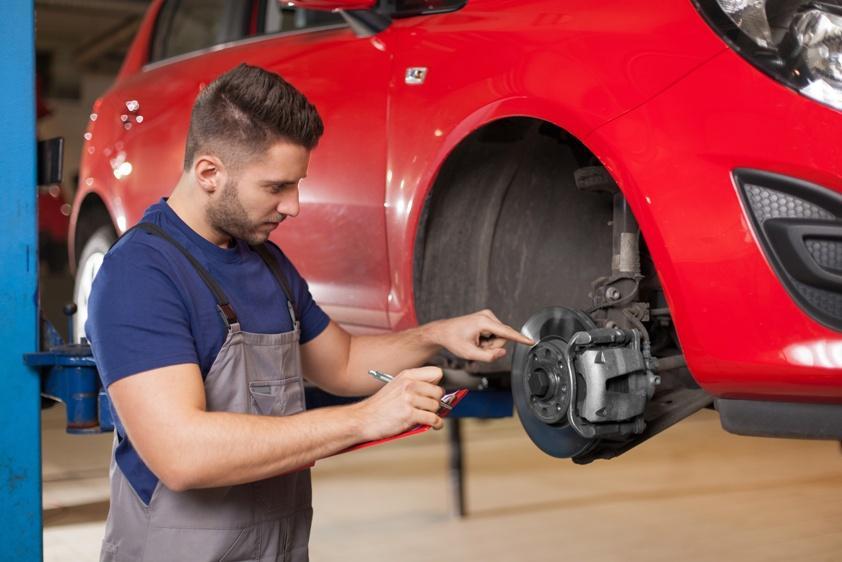Get the Right Tires & Auto Repair Near Kendall Green, FL
Air Bleeding in the Brake System Explaines
The upkeep of your vehicle's brake system is essential for its performance and safety. Air bleeding, which makes sure your brakes function properly, is a crucial component of brake maintenance. We will go into great detail about brake system air bleeding, its significance, the procedures involved, and some advice on how to treat it in this thorough guide.
What is air bleeding in a brake system?
The process of removing air bubbles or trapped air from the brake lines and hydraulic system is known as brake system air bleeding, also called brake bleeding. A spongy brake pedal and poor braking performance can result from air entering the brake lines. The brake system's proper bleeding helps restore optimal brake function.
Brake Repair North Andrews Gardens, FL

What Makes Brake System Air Bleeding Important?
- Air in the brake lines can compress, resulting in a soft or spongy brake pedal for improved brake performance. The brake pedal feels firm and responsive because the system has been bleeding.
- Enhanced Safety: For safe driving, adequate brake performance is crucial. Breather failure is less likely when air is removed from the brake lines, especially in emergency or sudden stops.
- Fluid for brakes can accumulate moisture over time, which reduces braking efficiency and increases the risk of corrosion. This prevents brake fluid contamination. Bleeding the brakes aids in the removal of old, moisture-filled fluid, which enhances overall brake health.
When Should Your Brakes Bleed?
. brake replacement Coral Ridge Isles, FLIt's crucial to be aware of when to bleed your brakes. Here are a few examples of situations where air bleeding in the brake system might be required:
- After Brake Component Replacement: To make sure there is no air in the system whenever replacing brake pads, calipers, brake lines, or the master cylinder, it is a good idea to bleed the brakes.
- Soft Brake Pedal: If you notice a soft or spongy brake pedal, bleeding is required because air may be present in the brake lines.
- fluid for brakes change: Typically, a brake fluid flush or change involves bleeding the brakes. Old brake fluid can cause performance problems, so regular fluid replacement is necessary.
How to Bleed Your Brake System
Pompano Beach, FL Mobile Brake Repair - Dr Brakes Complete Auto Repair
Breather system air bleeding requires some equipment and a methodical approach. The general procedures are as follows:
assemble Your Equipment:
- Jack stands and jack.
- Lug wrench
- Fluid for brakes
- pristine plastic tubing
- Set of sockets or a wrench
- brake bleeder kit, if one is available.
Prepare Your Car:
- Make sure the parking brake is activated and your car is on a level surface.
- To make it simpler to turn the wheels later, loosen the lug nuts on all four wheels( but do not remove them ).
Where is the Brake Bleeder Valve located?
Mobile Mechanic Kendall Green, FL
- On each brake caliper or wheel cylinder, locate the bleeder valve. It's typically a tiny, nipple-shaped valve.
Connect the tubing that is clear.
- The bleeder valve should be attached to one end of the clear plastic tubing. To collect the old brake fluid, place the other end in a container.
The Bleeder Valve should be opened:
- Turning the bleeder valve counterclockwise will help you open it with a wrench or socket. Before doing this, check that the tubing is securely connected.
enlist the aid of a helper:
- While you watch the tubing attached to the bleeder valve, ask a friend to press the brake pedal steadily and slowly. The pedal should be held down and pressed by the helper.
the air was bled:
Best Brake Repairs in North Lauderdale, FL
- Old brake fluid and air bubbles will enter the tubing as your assistant applies the brake pedal. When there are no longer any air bubbles present and only clean brake fluid is flowing, close the bleeder valve by turning it clockwise.
Repeat the procedure:
- Repetition the process for each of the four wheels in the descending order: front passenger, rear driver, and rear passenger. Work your way closer by starting with the wheel that is furthest from the master cylinder.
Brake fluid on top:
- Throughout the process, periodically check the brake fluid reservoir to make sure it isn't depleted. Keep it filled to the brim with the right amount of brake fluid for your car.
The Bleeder Valves should be tightened:
- Tighten the bleeder valves firmly after bleeding all four wheels.
Check the brakes.
10 Best Kendall Green, FL European Car Repair Shops

- To make sure the brake pedal feels firm and responsive, have your assistant repeatedly press it.
Wheel Repair:
- Reattach the wheels, then firmly tighten the lug nuts. Tighten the lug nuts in a star pattern and lower your car from the car's jack stands.
Tips for Air Bleeding in Brake Systems Successfully

- Use the Right Brake Fluid: Always use the brake fluid that the owner of your car recommends.
Don't Reuse Old Brake Fluid: Fluid for brakes can degrade over time, so always use fresh brake fluid when bleeding the brakes.
Finally, maintaining your brakes properly and keeping you safe on the road requires brake system air bleeding. Long-term accidents and expensive repairs can be avoided by regularly checking and bleeding your brakes when necessary.
this website go to this website